



With Christmas on the way those of us of a certain age will remember as kids asking our parents for a present of a Keil Kraft balsa wood plane model. While making it our mind’s would wander to real aeroplanes that were made of wood maybe even the huge, in our child’s eyes, de Havilland Mosquito. But I’m sure nobody ever thought of the grandaddy of all wooden planes the Hughes H-4 Hercules. Better known as the ‘Spruce Goose’, with a wingspan greater than a Boeing 747 this was truly the big one. Indeed until 2019 when the twin fuselage composite Stratolaunch ROC was built it had the largest wingspan of any aeroplane ever built.

So how did such a monster come about? Back in 1942 the US Government issued a request for an aircraft able to carry up to 750 troops or two Sherman tanks across the Atlantic to Europe to support the war effort. There were no aircraft in production at the time that would anywhere near fill this requirement. The Hercules was the brainchild of ship designer Henry Kaiser with aircraft designer Howard Hughes and would initially be called the HK-1. Kaiser having no experience in aviation left most of the work to Hughes and his Hughes Aircraft Company later withdrawing from the project entirely at which point Hughes renamed it the H-4 Hercules. The contract to build three aeroplanes was issued in 1942 but it would be 16 months later that construction of the first HK-1 was started, this was the point at which Kaiser withdrew, frustrated by delays in obtaining materials and also with Hughes demanding perfection in the design.

Howard Hughes had always had an interest in engineering and following the death of his father he inherited a controlling share of the Hughes Tool Company that made and leased out drilling bits to the oil industry. This business was hugely successful and eventually made Hughes one of the richest men in the world. His interests did not just include aviation but also the movie and entertainment industry gaining a controlling interest in RKO pictures. His passion for aviation would see him set up the Hughes Aircraft Company and build several different types of prototype aircraft which Hughes would fly himself. He also set many aviation records. Along the way he was involved in several crashes - one near fatal. His injuries would affect him for the rest of his life. He branched out into obtaining controlling interests in airlines TWA and Northeast. He was later forced to sell his TWA shares in 1966 making over 546 million Dollars. In 1970 he purchased Californian airline Airwest and renamed it Hughes Airwest, the airline would be taken over a decade later by Republic Airlines.
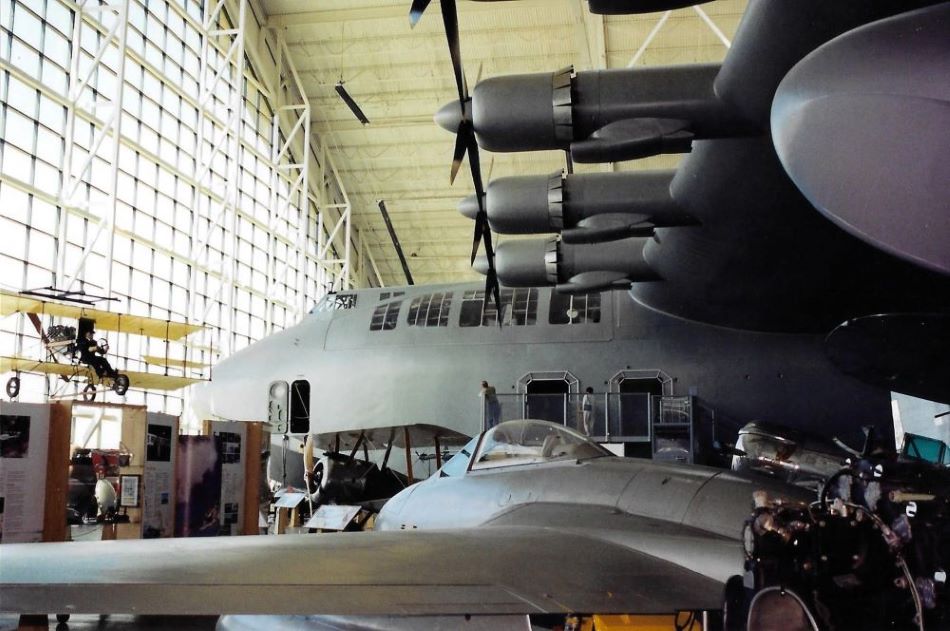
With no aluminium being released to the H-4 project the vast majority of the aircraft was built from Birch wood laminated and moulded into shape like plywood, thus the nicknames Spruce Goose or Flying Lumberyard came into being. Hughes at this time renegotiated with the government to reduce the requirement of three aircraft down to one as it was obvious an aircraft of this size would take a long time to build and there was no way he could build three in the time scale (two years) the US Government contract required.

Howard Hughes had obtained his fortune when he inherited the Hughes Tool Company that made drills and equipment for the oil industry. His main interest was aviation on which he spent many millions of dollars.
Construction of the huge plane would in fact not be completed until well after the war and cost (at the time) 23 million dollars. Hughes had to face a senate inquiry in August 1947 as to why so much government money had been spent on an aeroplane that had still not taken to the air. He put his reputation on the line at the hearing pointing out this was the largest aeroplane ever built and saying if the plane was a failure he would leave the country and never return.
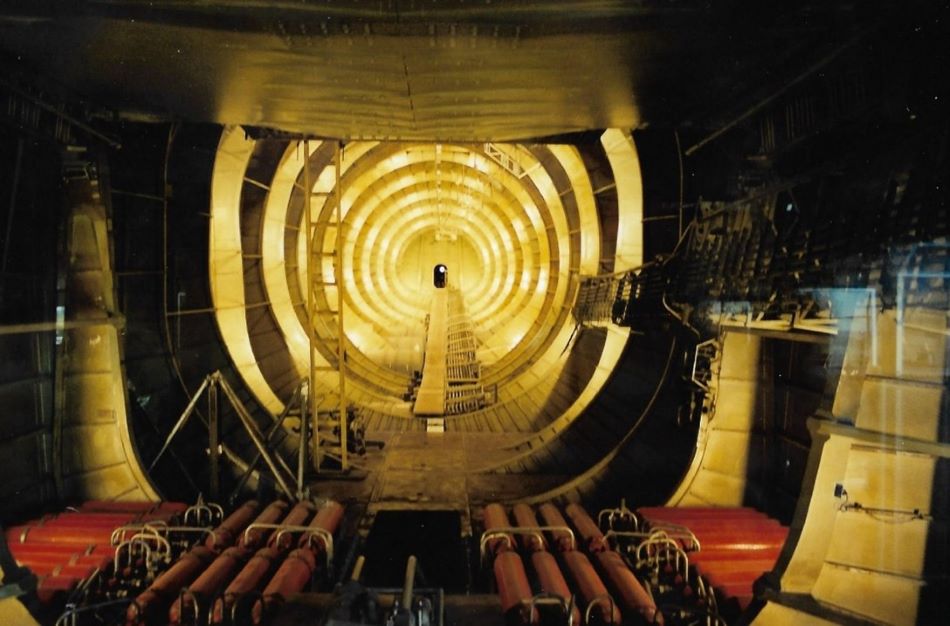
The Hercules was built at the Hughes Aircraft plant at Playa Vista near Los Angeles California but it was of course a flying boat and thus was dismantled into fuselage, two wings and tail assembly for shipment by a house removal firm to Pier E at Long Beach so a launch ramp could be built into the sea. A hangar was also built around the massive flying boat. With a length of over 218 feet, a wingspan of over 320 feet and a height of 80 feet this needed to be a very large hangar and these dimensions still make the H-4 to this day the largest flying boat ever built.

The Hercules was powered by eight Pratt & Whitney R-4360 radial piston engines each with a power output of 3000 HP, with 28 cylinders each and a dual ignition system the aircraft would be flying with 448 spark plugs! The empty weight of the plane was planned to be 250,000 pounds and it was hoped the cruising speed would be 250mph at around 21,000 feet. The original specification called for a crew of just three.
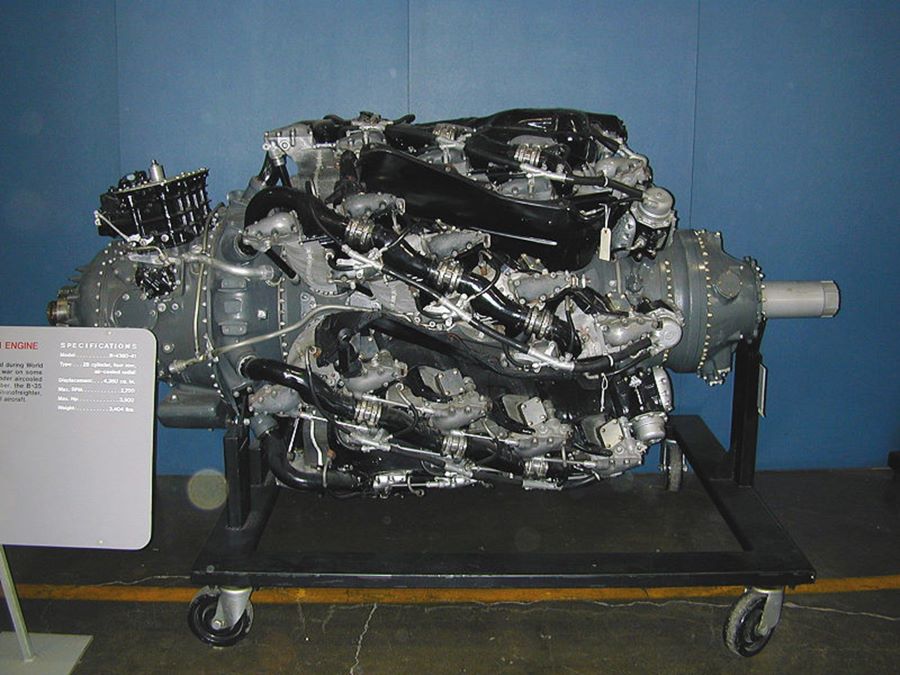
After returning from the Senate hearing Hughes was determined to prove his aeroplane was a success, so on 2 November 1947 Hughes climbed into the Captain’s seat and was joined by a co-pilot, two flight engineers, 16 mechanics and two other crew members ( compare this to the planned three crew operation!) On board there were also invited guests from the press and industry making a total of 36 people joining Hughes for the planes first taxiing tests. Two uneventful runs took place and then Hughes turned the H-4 toward open water and on his third run pulled back on the yoke and she took to the air reaching a height of 70 feet and flying at 135mph for a flight lasting just 26 seconds and covering about a mile before alighting back on the water. As far as Hughes was concerned this short hop proved his plane was a success vindicating the huge cost to the government, however this first flight would also be the last for the Spruce Goose, she would never fly again as the US Government no longer had any use for the plane.

After the jubilation of the first flight it was apparent to all concerned that there was no longer a definite future for such an aircraft and she was hauled out of the water back into the hangar. From 1947 until 1962 Hughes had a team of 300 full time workers maintaining the H-4 in airworthy condition inside the hangar, they were all sworn to secrecy as to what they were doing. In 1962 this huge workforce was reduced to 50 people and following Hughes’ death in 1976 finally abandoned.

Having ploughed so many dollars into the project the government disputed ownership of the aeroplane with the Hughes Aircraft Company. Eventually in the mid-1970s a deal was struck which saw ownership pass into the hands of the Summa Corp which was the holding company for many companies owned by Howard Hughes after he sold the Hughes Tool Company. To achieve this ownership Summa had to donate the H-1 Hughes racer plus part of the wing from the Spruce Goose to the Smithsonian museum plus pay the US Government $700,000. In 1980 the Spruce Goose was sold to the Aero Club of Southern California who placed her in a Dome structure at Long Beach next to the preserved Queen Mary liner and opened the plane to the public.

1988 saw the Disney Corporation acquire the site for a new theme park to be called Port Disney. These plans however were shelved and in 1991 the Aero club were informed by Disney they no longer wanted the Spruce Goose on display, so the hunt was on to find her a new home. A deal was eventually struck and she made the over 1000 mile long journey up to McMinnville near Portland Oregon and joined a new museum being set up by the Evergreen shipping company to be known as the Evergreen Aviation and Space Museum. The empty dome at Long Beach has now become a cruise terminal for Carnival Cruise Lines. She arrived at her new home in February 1993 and would be displayed in a purpose built new building.
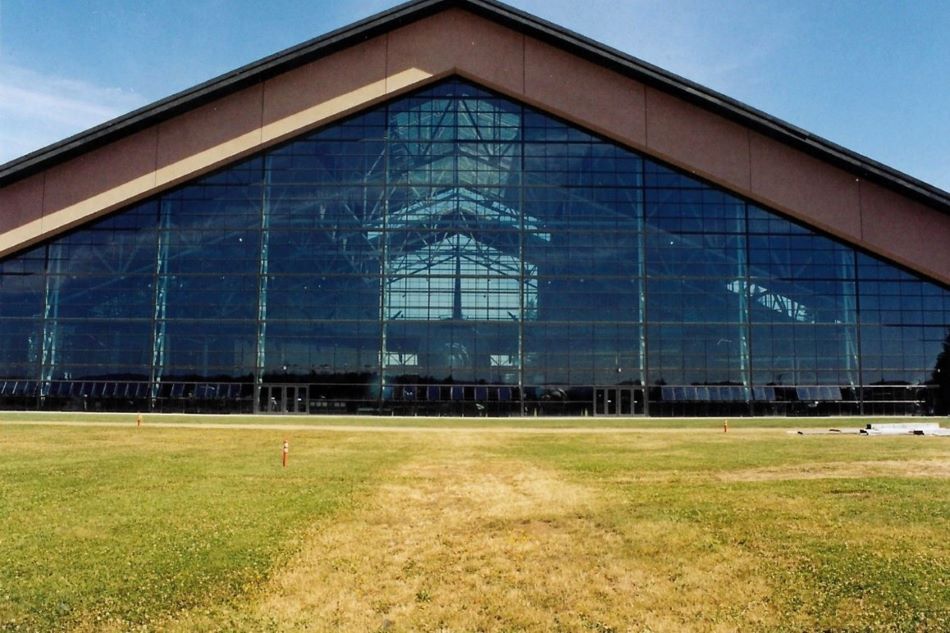
She is now displayed with a number of other aircraft around her which enables a better perspective of her size. The cockpit and part of the fuselage is open to the public and the insides are truly cavernous. There is also a display telling the story of Howard Hughes.
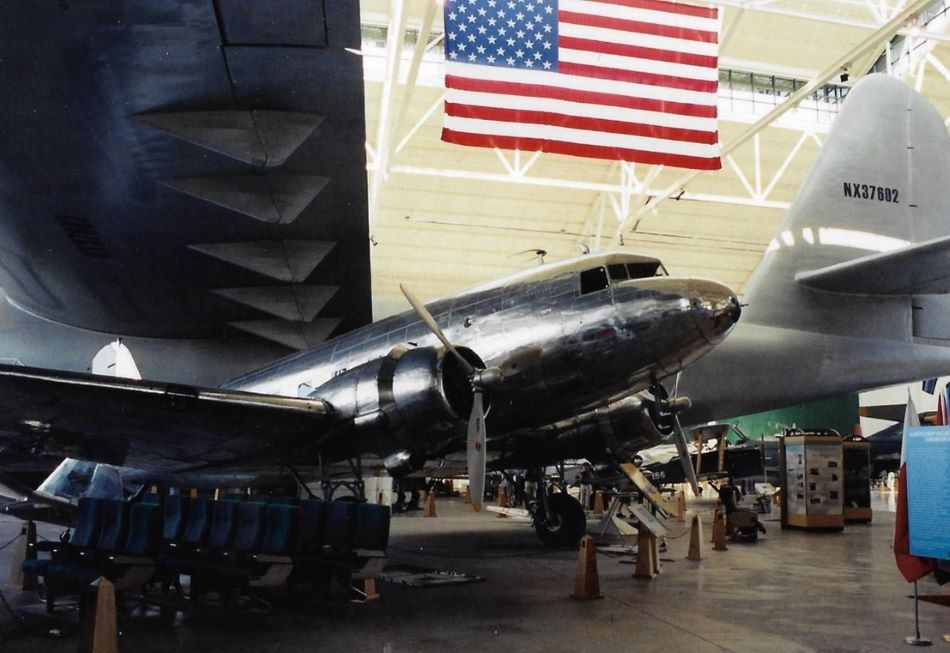
In later life Hughes would suffer from failing health and OCD which was suspected of being brought on by the several air crashes he had suffered during his flying career. The constant pain from his injuries also led to him becoming addicted to Codeine. He became an eccentric recluse living on the top floor of a number of hotels and passed way in 1976 with kidney failure whilst en-route to a hospital in Texas. His iconic Spruce Goose outlived him but the two are so linked that as long as she remains on display he will never be forgotten. This story and more was very well covered by the 2004 film The Aviator featuring Leonardo DiCaprio as Howard Hughes.
To sum up, think what you will about the plane or its designer, but all I’ll say is it would have needed a huge box to get her under a Christmas tree with the other Keil Kraft kits!
Merry Christmas and Happy New Year to you and your families.
Keith
Registered Charity No. 285809